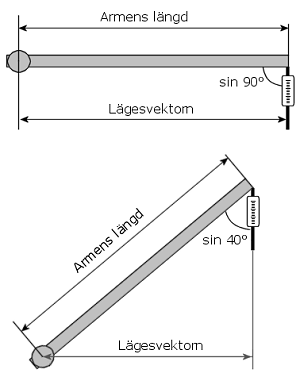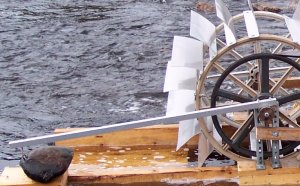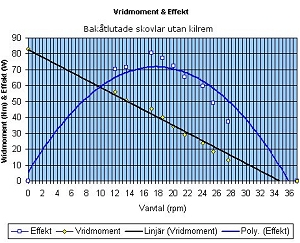Torque and Power
The torque (or moment of force) may be calculated using the following formula:
τ = F x r x sinΦ
sinΦ equals 1 if the angle is 90°. If the arm with which the torque is measured is horizontal, the angle
may therefore be disregarded. The position vector r therefore equals the length of the arm, between the
anchor point of the scales and the centre of the turning axis. The formula may then be written as:
τ = F x r
r (the position vector) is measured in metres and since F = m x g, where m stands for mass in kg and g for
earth’s gravity (9.81), you can simplify things greatly for yourself by making the arm 1 metre long. The
torque measured in Newton metres (Nm) then equals about 10 times what the scales are showing. Thus, each
kilogram will equal 10 Nm.
In order to estimate the torque, use the calculator below. Please note that the arm should be weighed for
correct measuring results. Lift the arm to a point straight above the stationary scales, using another
pair of scales until it is in a horizontal position. Read the weight and add it to the mass column in the
calculator below.
N.B: Use a full stop when using decimals, not a comma!
|
Once you are familiar with the torque at different revolutions per minute (rpm’s) the power is easy to
calculate. The formula for power calculation is:
P = τ x n x 2 x pi
τ = Torque
n = roations/ second
pi = 3,14
|
|
|


In the picture above the spring weighing scale is hidden behind the rock. When the screws are tightened around
the axis of the wheel, the wheel slows and the scales may be read. Then the screws are tightened again followed
by a new reading. Repeat and note the rpm of the wheel and the weight on the scales until the wheel is
completely still.


When you have collected all the data you need for torque and effect, it is possible to draw a curve diagram
showing effect and torque.
|